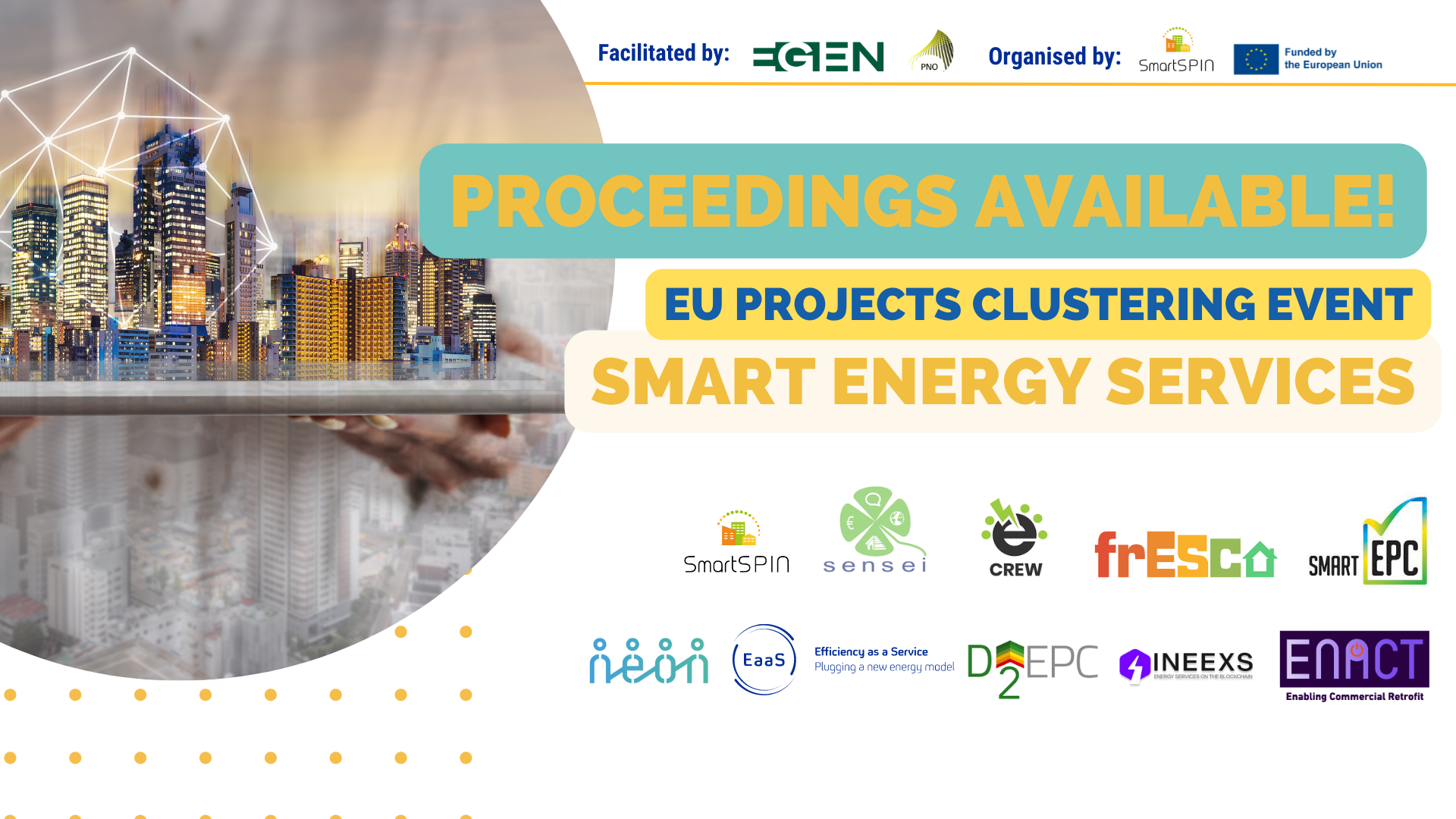Proceedings now available: Smart Energy Services Clustering event!
The “Smart Energy Services” clustering events organised by EGEN and PNO Innovation Belgium were held on 25th April and 17th May. The two online workshops brought together top research centers, industry representatives and other stakeholders currently involved in EU-funded projects aiming to improve the energy efficiency and flexibility of European buildings.
In the European Union (EU) buildings independently are considered to be the largest consumer, accounting for 40% of energy consumption and 36% of the generated carbon emissions. According to the latest studies, 75% of all building in the European Union are energy inefficient, and only 1% of them are renovated each year. Apart from this scenario, the ongoing energy crisis and the urge to become climate-neutral by 2050 have accelerated the interest of the EU to contribute to smart energy solutions with the aim of guarantee energy security and affordability.
Both clustering events were opened and moderated by Thomas Maidonis, Senior Consultant at EGEN. The events proceeded with a series of presentations highlighting the main results and concluded with a discussion on the main barriers and challenges identified by each EU-funded project to secure smart energy services and unleash the energy efficiency and flexibility potential of European buildings.
The European Climate, Infrastructure and Environment Executive Agency (CINEA) was represented by Sylvain Robert (Project Officer) and Pierre-Antoine Vernon (Project Advisor). Sylvain Robert gave an update on the latest developments regarding the recast of the Energy Efficiency Directive and the Energy Performance of Building Directive. These directives are key policy instruments aimed at improving energy efficiency and reducing energy consumption in the European Union. The importance of constructing new buildings with minimal or no carbon emissions throughout their lifecycle by 2050 was also stressed.
For years, the European Commission has launched various funding opportunities to support the clean energy transition, encompassing all these objectives. Sylvain Robert presented the next opportunities for energy efficiency projects: the new LIFE Programmes’ 2023 Calls for project proposals with a total of € 611 available for nature conversation, environmental protection, climate action and clean energy transition projects. Further information can be found here and here.
Moreover, to facilitate the digital transformation technologies in buildings the European Commission has developed the Smart readiness indicator (SRI). Pierre-Antoine Vernon highlighted the impact of this tool as a common EU scheme for rating the smart readiness of buildings and assess how smart a building is in terms of responding the needs of the occupant, using energy efficiency control strategies and integrating wing energy grids. Thus, this tool becomes relevant for society as it provides common language for building stakeholders to discuss how to make buildings smarter and what benefits this will bring. In this framework the SRI-ENACT project aims at developing a web-based toolkit implementing the proposed SRI driven methodology. In addition, the project is training 120 SRI auditors who will assess 1,200 buildings across 8 EU pilot countries.
Pierre-Antoine further shared some useful resources developed by the SmartBuilt4EU project; a list of EU-funded research projects and their results in the field of Smart Building Technologies and Services as well as a portfolio of synthetic factsheets concerning 101 EU-funded projects, which have been identified and selected for their particular relevance with the Smart Building topic.
WATCH THE RECORDINGS!
“Smart Energy Services” event on 25 April 2023
“Smart Energy Services” event on 17 May 2023
THE PROJECTS IN A NUTSHELL

Luciano De Tommasi (IERC), project coordinator of the EU-funded SmartSPIN project explained the business model developed in the framework of this project to solve the split incentive problem. The SmartSPIN business solution is expected to deliver benefits to all the parties (landlord, tenants, ESCO) and to allow both owners and tenants to fully achieve the rewards of energy efficiency improvements and flexibility services while allocating the costs in a fair and more transparent way. As a latest result, the project has launched two interactive web apps showing 1)the potential for energy management in energy performance contracting (EPC) in commercial buildings and 2)the early building performance diagnostic.
The main barriers identified by the SmartSPIN project are:
- Limited development of Smart Energy Services markets across Europe
- Lack of awareness and knowledge about the Energy Efficiency-as-a-Service (EEaaS) Business Model
- Limited awareness regarding opportunities to improve energy efficiency in the commercial rented sector sharing the benefits between all the parties involved in a fair and transparent manner
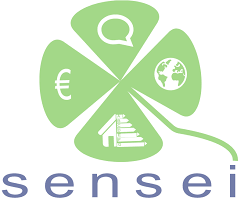
The EU-funded SENSEI project, presented by Sotiris Papadelis (HEBES Intelligence), enables energy efficiency to be rewarded as an energy resource and a new grid service while turning the energy efficiency retrofit project’s value into an investable asset for private financing. SENSEI combines Pay-for-Performance (P4P) arrangements with the EPC model and engages in negotiation games with preliminary stakeholders. This offers the possibility for stakeholders to shape the SENSEI business models according to their needs. In making buildings more energy-efficient and attractive for third-party investors, SENSEI is fostering the business community to contribute to the EU climate goals while avoiding the construction of new power plants and reducing grid infrastructure costs.
In this context the SENSEI project is the first project that has examined how P4P programs implemented in the USA and Canada could be replicated in the European Union. As a result, P4P can incentiviSe the development of the know-how and infrastructure necessary for energy retrofit project aggregation.
However as main barrier the project has concluded that “the P4P requires regulation that obliges system operators to consider energy efficiency as a no-wires alternative, and Article 7 of the Energy Efficiency Directive obligated parties to use savings that are estimated ex-post”.

The eCREW project coordinated by Johannes Slacik (JKU Linz), leads and support the roll-out of an innovative scheme of household cooperation in energy management, addressing Community Renewable Energy Webs (CREWs), in which households jointly exploit household-level electricity generation and battery storage capacities and optimise energy efficiency and expenditures. The eCREW model is based on an innovative conceptual approach that makes available to the different actors of the energy system, new and powerful tools to address the challenges related to the production, distribution and sale of renewable energies. Indeed, eCREW model provides effective means to motivate citizens in joining an energy community and keep them involved. It also provides practical tools to monitor the energy flows and to distribute the costs and the benefits among the members, and paves the way for the energy companies to exploit their competencies and assets by playing a key role in the sustainable renewal of our energy system. Finally, it could act as a connecting link between energy communities and the local authorities.
The main barriers identified by the eCREW project are:
- Different Business Models are necessary to fit the local and national frames
- A unified regulatory EU-policies for tariff-settings, regulations and market conditions are recommended to foster the energy community development
- A holistic digital approach for managing the different energy sources is needed
- PV investment – amortisation calculator is needed to attract prosumer engagement/investment – the more prosumers, the less savings, the longer the amortisation

Juan Antonio Aranda (CIRCE), coordinator of the EU-funded frESCO project, pointed out the role of the project to deliver the next generation of EPC under the principle of P4P. The project is developing new EPCs to disengage from current outdated savings based performance contracts and allow evolution of energy market trends towards new hybrid schemes that not only reduce costs, but also create new revenue streams for the end-consumers/prosumers, by empowering them to participate in energy transactions and become active players to the overlying energy market actors. The innovative hybrid energy services combine Building retrofitting and investments for the installation of smart equipment energy efficiency measures, flexibility services and non-energy services. In this context, frESCO project will deliver the next generation of EPC under the principle of Pay for Performance.
The main barriers identified by the frESCO project are:
- Low smart readiness of many residential buildings and high gas dependency limits the opportunities of smart energy services nowadays in the residential sector
- Data interoperability is a great handicap to integrate different data sources in the residential sector
- There is a high reluctancy to explicit demand response and explicit efficiency strategies through automated control by residents
- Implicit efficiency strategies are highly dependent on the user’s behavior and reactions to recommendations. A parallel educating effort addressed to end users is key for the success of the new generation of smart services
- Not all dwellings present favourable business cases for the new smart services. They are affected by consumption profiles and the existence of flexibility and self-consumption assets
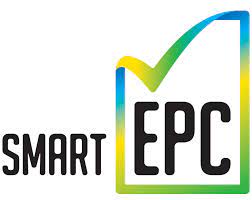
The EU-funded SmartEPC project, presented by Milka Hrbud (REGEA), aims to enable the transition towards smart, sustainable cities and municipalities by utilising energy efficiency as a key potential of new, emerging technologies and services. Refurbishment of old and inefficient public lighting units with the integration of IoT technology and Smart City components will pave the way for a wide range of energy and non-energy related services and applications, including public safety ensuring, traffic management, EV charging, environmental monitoring and next generation of cellular communication. The project’s objective is to develop standardised EPC documentation for integrating energy and non-energy related services.
The main barriers identified by the SmartEPC project are:
- The EPC model is not universally applicable. Therefore, the assessment of the appropriateness of this energy reconstruction model for each individual building or infrastructure facility is one of the most important steps in the project preparation
- The ratio of investment volume and potential savings is one of the key factors – a simple pay-back period should be between 6 and 12 years (usually about 10 years)
- Generally speaking, the EPC model is not suitable for small buildings or small public lighting systems – the return on investment resulting from savings in operating costs is lowered to lower values for small buildings
- Major building interventions (deep renovations) or major infrastructure upgrades (changing el. cables and lampposts) are only possible if the local authority is ready to pay additional costs

Valentina Janev (Institut Mihajlo Pupin), partner in the EU-funded NEON project, presented the main vision and current results of the project. The NEON project aims to exploit building energy efficiency, renewable energy generation and storage, and demand flexibility to improve the performance of energy system and enhance the quality of life of European citizens.
As a result, the NEON project has concluded that the techno-economic scenario analysis is quite demanding as they have to take into account the heterogeneity of the community. The Citizen Energy Communities (CEC) differ in terms of size, number and typology of potential members, degree of energy efficiency, PV system installed, EV charging stations, smart meters, among others. Based on these terms, various systems alternatives have to be studied to assess the feasibility of different kinds of interventions related to different requirements of each pilot.
Furthermore, energy efficiency interventions are not enough if they are not coupled with an enhancement and expansion of the energy community. The CEC assets require proper hardware and communication infrastructure to orchestrate and coordinate actions within the system and with the grid.
The main barriers identified by the NEON project are:
- Investment in infrastructure needed in order to increase self-consumption (not enough PV installations, storage batteries are not present, batteries management costs; lack of measurement systems – smart meters costs, electrical network is obsolete)
- National regulatory barriers (e.g., Permissions for CEC; Possible extra taxes)
- Skills (stakeholders understanding of energy system; lack of adequate technical and administrative skills that allow the LEC Operator to manage the development of the future Energy Community and the related energy services)

The Efficiency as a Service or EaaS project was presented by Dimitris Karamitsos (Basel Agency for Sustainable Energy), coordinator of the project. EaaS offers a pay-per-use model where customers only pay for the service they receive, rather than the physical product, therefore avoiding the upfront costs of expensive modern efficient systems. In addition it integrates financial tools to recapitalise technology providers who own the equipment and take on all future costs related to operations and maintenance, including water, electricity, and repair bills. EaaS can also encourage manufacturers of energy efficient technology to design for reuse rather than obsolescence, thus supporting circular economy.
The main barriers identified by the EaaS project are:
- The risk perception on energy efficiency investments:
- Perception of high risk what means high return expectation
- Performance risk (technology, service, maintenance and logistics)
- Energy efficiency has a high risk-perception and cannot compete with other investment opportunities
- High need for Accessibility, Quality Reliability, ROI, Safety and Climate Impact
- The barriers to energy efficiency:
- Higher upfront cost of efficient technology
- Lack of trust in performance
- Uncertain returns
- Higher-risk perception
- Prioritisation of investment in core business
- Lack of maintenance skills
- Complexity of novel technologies on integration (digitalisation, solar PV implementation, other)
- Limited financing options
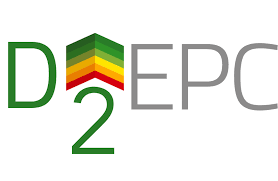
Stavros Koltsios (CERTH/ITI) presented the D^2EPC project that aims to set the grounds for the next generation of digital and dynamic EPCs for buildings. The proposed framework leverages both the static digital information included in BIM documentation as well as operational data from the buildings’ IoT infrastructure to replicate their behavior, resulting to the concept of “building digital twins”. The end-users are provided with a novel set of energy, environmental, financial, and human comfort and wellbeing indicators through the proposed EPC classification scheme.
THE main barriers identified by the D^2EPC project are:
- Limited existing information on the actual energy performance of buildings
- Lack of a standardised way (protocols) for IoT data collection and data privacy concerns
- Need for harmonisation of EPCs with the smart city concept

Filippos Anagnostopoulos (IEECP), project coordinator of the InEExS project explained its core concept. The project aims to deploy integrated energy services across sectors and carriers, as well as the deployment of the tokenisation of energy saving data in a public blockchain to facilitate cooperation among market segments and actors. INEEXS Business Cases (BCs) are improving on existing, viable business models by enhancing their integration with other services and sectors and build on pre-existing communities of participants, while aiming at extending these services to a large share of their market segment. The services, models and contracts that INEEXS plans to deploy and validate in different EU states are EPC with P4P guarantees (Germany), Improved self-consumption of DER in Energy Cooperatives (Spain), Energy efficiency and flexibility services for legacy natural gas boilers (Greece), Smart energy management for EV chargers and electricity-based HVAC appliances. Decentralised Energy Efficiency Power Plant (DEEPP).
The main barriers identified by the InEExS project are:
- Perceived high risk for engaging in large scale sustainable energy investments with long payback periods
- Often-high financial costs for up-front investments, especially for building energy efficiency, and interconnection with industry (e.g., for waste heat reuse and district heating)
- Payback uncertainty related to immature market conditions and structures
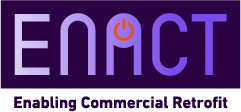
The ENACT project, presented by Mary Teehan (IGBC), is a 3-year initiative funded by SEAI, and aiming to ‘enable national action on commercial renovation’. Led by the Irish Green Building Council, the project will benefit to SME’s, buildings and financial professionals and decisionmakers. The project outcomes will provide research to develop solutions for market failures as well as to inform holistic decision and policymaking in achieving national targets in attitudes, behavioral economic, technical and financial areas. In addition, it will support with software tools for individuals in commercial sector to aid decision making and monitoring, and professional training and awareness roll out.
The main barriers identified by the ENACT project are:
- Buy-in: of board members/ decisions makers on a company basis
- Commercial mindset: always priority number 2, unless intricate to business operations. Short-thinking for smaller companies. Particularly for non-customer facing office, food, warehouse typologies etc. Customer facing sectors re keener to upgrade and attach to their brand – retail & hospitality
- Operational: cost of halting, inhibiting company operations for energy upgrade works
- Financial: financially unviable pay back terms for works done to reduce energy
- Resources: lack of time available to even investigate energy actions for SME’s & lack of access to resources – people and money
- Fear: the Pandora’ Box factor of looking into and finding out a suite of further works that need to be done to the premises
- National focus: nationally, the residential sector has been focused on and the public sector. Ireland has not focused on commercial on a scale of relativity.
- National planning: planning & regulatory barriers remain regarding Fire and Accessibility mainly when doing upgrades
- National financial supports: few commercial grants exist
- National capture of data: while works are done in the commercial sector privately, very hard to capture as the BER (=EPC) is not always conducted so policy is not accurately informed
- Skills: lack of capacity to conduct works and not enough investment in this area
- Non-compliance: in Ireland currently no penalty or ‘stick’ for not doing energy upgrades outside of high energy bills to the company
MAIN CONCLUSIONS
In this context, all the projects identified different obstacles from a technological point of view to financial constraints and regulatory complexities. Furthermore, the main conclusions show that the lack of unified regulations, especially concerning demand flexibility, is hindering the deployment of these new business models to enhance energy efficiency in Europe.
A common solution proposed by most of the projects was development of skills and facilitation of services to standardise documentation at European level. Contractual Templates have been produced in some of the presented projects that can be used as a basis or developing agreement between stakeholders (see projectS’ websites).
The different regulations established in each Member State come up with challenges in the replicability of examples and good practices. The identification of the main challenges by these projects can help develop strategies and solutions that could be applicable by all the EU countries. But these challenges may require collaborative efforts and shared knowledge.
THE EVENT IN NUMBERS
The “Smart Energy Services” organised by SmartSPIN and facilitated by EGEN and PNO Innovation as a two online clustering webinar on 25th April and 17th may attract a diverse range of stakeholder’s from industry, academia, institutions and organisations. The event was held in an online format and was recorded for the participants who were not able to join or for other interested stakeholders that could not attend online.
Overall, 148 people registered to both events. In total 52 people joined the event held on 25th April, and 46 people participated during the event held on 17th May.
